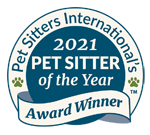How to Create a Multi-Dog Household: Tips for Introducing New Dogs to Your Home
Bringing a new dog into a home that already has one or more dogs can be an exciting yet challenging experience. The key to success lies in making sure the introduction process is smooth and stress-free for all dogs involved. Whether you're adding a new puppy to the pack or adopting an older dog, careful planning and a gradual approach are essential. In this guide, we’ll explore effective strategies for introducing new dogs into your home, ensuring a harmonious multi-dog household.
The Importance of a Well-Planned Introduction
Introducing a new dog to your home is more than just a meet-and-greet. Dogs are territorial animals, and bringing a new pet into their established space can cause stress, anxiety, or even aggression if not handled properly. A well-planned introduction helps to minimize these risks and promotes a positive relationship between the dogs from the start.
Preparing Your Home for the New Arrival
Before bringing a new dog into your home, it’s important to prepare the environment. This involves creating a space where the new dog can feel safe and comfortable while also ensuring that your existing dog(s) do not feel threatened or displaced.
1. Create Separate Spaces
Why It’s Important: Separate spaces help prevent territorial disputes and give each dog a place to retreat if they feel overwhelmed. It also allows them to gradually get used to each other’s scent and presence without direct interaction.
How to Do It: Set up a comfortable area for the new dog in a room or a section of your home where they can relax away from your existing dog(s). Include essentials like a bed, food and water bowls, and toys. Similarly, ensure that your current dog(s) have their own space where they feel secure.
2. Introduce Scents Before a Face-to-Face Meeting
Why It’s Important: Dogs rely heavily on their sense of smell to understand their environment. Introducing scents before a face-to-face meeting helps to familiarize them with each other in a non-threatening way.
How to Do It: Exchange bedding or toys between the dogs so they can get used to each other’s scent. You can also rub a cloth on one dog and then allow the other to sniff it. This helps reduce anxiety during their first in-person interaction.
The First Meeting: A Controlled Introduction
The first meeting between the dogs should be carefully managed to ensure it goes smoothly. The goal is to create a positive association with each other from the start.
1. Choose a Neutral Location
Why It’s Important: Meeting on neutral territory reduces the likelihood of territorial aggression from your existing dog(s).
How to Do It: Arrange the first meeting in a park or a friend’s yard, where neither dog feels they need to defend their space. Both dogs should be on a leash, but allow them enough freedom to move around and interact naturally.
2. Observe Body Language
Why It’s Important: Dogs communicate through body language, and understanding these signals can help you intervene before a conflict arises.
How to Do It: Watch for signs of positive interaction, such as relaxed body posture, wagging tails, and play bows. Be alert for signs of tension like stiff bodies, growling, or prolonged staring. If you notice any negative signals, calmly separate the dogs and try again later.
3. Keep the Interaction Short
Why It’s Important: Short, positive interactions help build a foundation of trust between the dogs without overwhelming them.
How to Do It: Limit the first meeting to just a few minutes. If all goes well, gradually increase the time they spend together in subsequent meetings.
Bringing the New Dog Home
Once the initial introductions have gone well, it’s time to bring the new dog into your home. This step should be handled with care to ensure a smooth transition.
1. Maintain Supervision
Why It’s Important: Close supervision allows you to manage interactions and prevent any potential conflicts as the dogs adjust to living together.
How to Do It: Keep the dogs on leashes during the first few hours or days at home, even indoors. This allows you to quickly intervene if necessary. Gradually increase their freedom as they show signs of comfort and positive interaction.
2. Feed the Dogs Separately
Why It’s Important: Food can be a significant trigger for territorial behavior in dogs, especially in a new environment.
How to Do It: Feed the dogs in separate rooms or at different times to prevent any competition or aggression over food. Gradually, you can move their feeding stations closer together as they become more comfortable with each other.
3. Establish a Routine
Why It’s Important: Dogs thrive on routine, and a consistent schedule helps them feel secure and reduces anxiety during the transition.
How to Do It: Keep feeding times, walks, and play sessions consistent for both dogs. Ensure that both dogs receive individual attention and affection, as well as shared activities to bond them together.
Managing Potential Challenges
Even with careful planning, challenges may arise as the dogs adjust to their new living situation. Being prepared to address these issues is crucial for maintaining harmony in your multi-dog household.
1. Addressing Dominance and Aggression
Why It’s Important: Dominance behaviors or aggression can disrupt the household dynamic and lead to stress or injury.
How to Do It: If you notice signs of dominance or aggression, such as resource guarding or fighting, it’s important to intervene calmly. Separate the dogs and try to identify the trigger for the behavior. If the issue persists, consider seeking help from a professional dog trainer. Dan’s Pet Care offers expert dog training services on Long Island, specializing in behavior modification and multi-dog households.
2. Handling Anxiety or Fear
Why It’s Important: Anxiety or fear in either dog can lead to behavioral issues and prevent a smooth integration.
How to Do It: Provide a safe space for each dog where they can retreat if they feel overwhelmed. Consider using calming aids, such as pheromone diffusers or anxiety wraps, to help reduce stress. Gradual desensitization to each other’s presence can also help alleviate fear.
3. Ensuring Equal Attention
Why It’s Important: Ensuring that each dog feels loved and secure prevents jealousy and competition for your attention.
How to Do It: Spend individual time with each dog, engaging in activities they enjoy. This not only strengthens your bond with each dog but also reduces the likelihood of conflict between them.
When to Seek Professional Help
If despite your best efforts, the dogs are not adjusting well to living together, it may be time to seek professional assistance. Persistent aggression, anxiety, or other behavioral issues can be challenging to manage on your own.
Dan’s Pet Care offers professional dog training services across Long Island, helping pet owners create harmonious multi-dog households. Our experienced trainers can work with you to address specific issues and develop a customized plan to ensure your dogs live together peacefully.
Building a Harmonious Multi-Dog Household
Creating a harmonious multi-dog household requires patience, consistency, and understanding. By carefully planning the introduction process, managing potential challenges, and providing ongoing support, you can help your dogs adjust to their new living situation. With time, most dogs learn to coexist happily and even form strong bonds with their new housemates.
Remember, every dog is unique, and the process may take longer for some than others. If you need additional support, don’t hesitate to reach out to professionals like those at Dan’s Pet Care. With the right approach, you can create a loving and peaceful home for all your furry family members.





